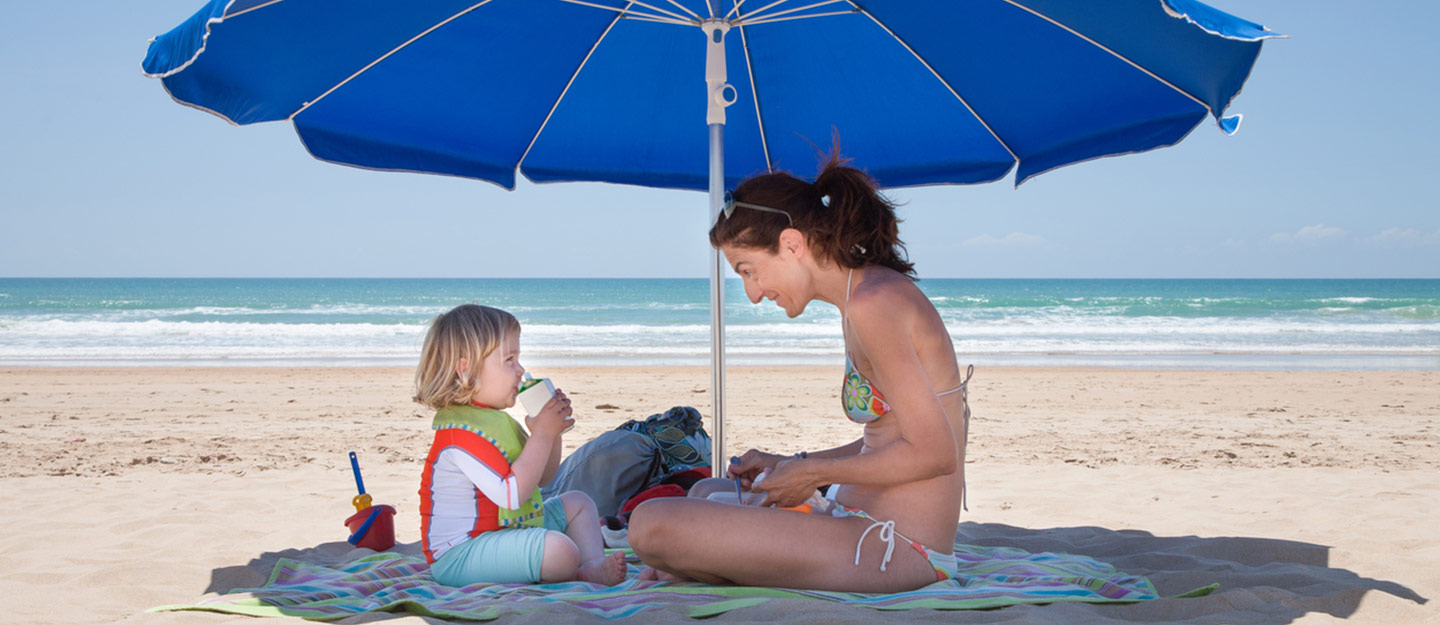Northern Michigan has water everywhere – from inland lakes to miles of shoreline on our bays and Great Lakes. Enjoying the beach is a fun family activity, especially in the summer, but it does carry risks as well. It’s important to make safety a priority and have the right information so you can enjoy your beach outing without worry.
“Among preventable injuries, drowning is the leading cause of death for children 1 – 4 years old,” says Jennifer Ritter, Fire & Life Safety Educator with the Grand Traverse Metro Fire Department and Safe Kids North Shore. That statistic highlights the importance of taking the right steps to prepare for your trip to the beach.
Start with swim lessons. Knowing how to swim will instill confidence in you and your children. Check your local YMCA for classes.
When you’re at the beach, remember that supervision is key. Children can drown in inches of water, so knowing where your kids are at all times is essential. The American Red Cross recommends staying within an arm’s reach of children who are in the water, and to avoid any distractions that take attention away from your kids. Beach trips are often full of distractions, from chatty friends and cell phones to photo opportunities and snacks. Being at the beach can create great family memories – but when your child is near the water these distractions need to wait.
Swim in areas that are marked for swimming and patrolled by lifeguards. However, lifeguards can’t do it all, so your supervision is still crucial.
Life jackets for non-swimmers are essential. Make sure to buy U.S. Coast Guard-approved life jackets to keep your little ones safe in the water and the focus on having fun.
Teach children early about the buddy system. No swimming alone! Make this one of your family rules, along with teaching children to ask permission before going in the water, and to go in feet first – no diving.
Learn about rip currents and how to get out of one. Rip currents can happen in large bodies of water as well as near piers and sandbars. Two of the most important things to remember about rip currents is to remain calm if in one, and to swim parallel to the shore to get out of one.
Leave wildlife alone and avoid patches of plants in the water where they tend to gather.
In addition to being safe in the water, you also need to protect your baby (and yourself) from the sun so don’t forget the sunscreen! Use a broad spectrum sunscreen to prevent both UVA and UVB rays. Use on children over 6 months of age and put it on 30 minutes prior to hitting the beach. Reapply often, especially when kids are swimming. Cover all exposed skin, not forgetting spots like ears, tops of feet and behind the knees. Choose sunscreen with at least a 15 SPF (sun protection factor). One childhood sunburn that blisters can double the risk of melanoma – the deadliest form of skin cancer – later in a child’s life.
If you’re wearing sunglasses at the beach, your kids should be too. Start them wearing sunglasses after 6 months of age. As with sunscreen, look for UVA and UVB protection.
Living near water is beautiful, exciting and fun. Keep these beach safety tips in mind for a worry-free time.





